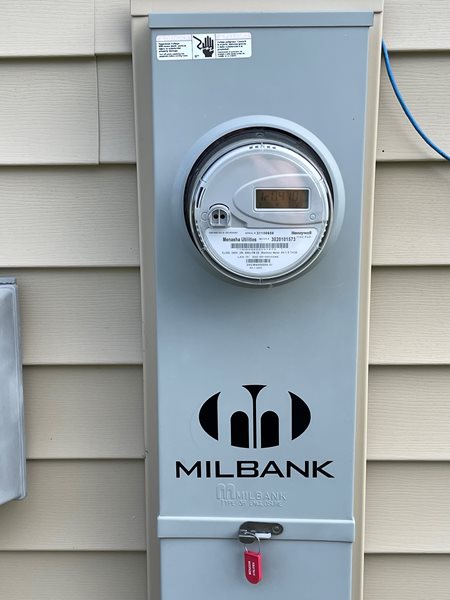7/21/2023
The Riveting World of Meter Sockets: Everything You Need to Know
Meter sockets… you don’t always know they’re there, but we’d be lost without them. So, what exactly is a meter socket? And why are they absolutely necessary? Keep reading to find out more about the gray boxes that are a key element in the electrical industry.
Meter Socket Basics
Imagine your home's electrical system as a vast network of power distribution. A meter socket serves as the gateway for electricity. It is the junction where the utility company's power supply meets your home's electrical system. In simple terms, a meter socket is the door that allows your electricity consumption to be accurately measured and monitored.
Meter sockets are constructed of weather-resistant metals, like aluminum and steel. The sockets are designed to withstand the elements, like extreme heat or saltwater air, and protect the electrical connections inside. As you can imagine, the best material for the job depends on the climate conditions where the meter socket will be installed.
Meter sockets are equipped with various features to enhance safety and functionality. These may include provisions for tamper resistance, surge protection, grounding provisions and sealable enclosures to prevent unauthorized access.
Milbank meter sockets are offered in single-position and multi-position and approved for various uses by utilities nationwide. Meter combos are available with disconnects, breakers or fusing. These are ideal for rural applications, outbuildings and other situations where service disconnects are located outside due to local codes and preferences.
From the outside, meter sockets are metal boxes with holes and a meter, a keep-it-moving-nothing-exciting-to-see-here piece of equipment. But without these, our utility companies wouldn’t have a safe way to measure electrical usage. Next time you’re outside, at home, work or around town, keep your eyes peeled, you’ll probably encounter a Milbank meter socket at some point!
Milbank offers hundreds of different types of single position, residential, self-contained meter sockets, as well as instrument rated meter sockets. Applications range from single-family homes to large industrial factories. There are hundreds of configurations available, including many sizes, knockout configurations, terminal configurations, hubs, locks and connectors. Visit our website to learn more about Milbank’s meter socket offerings.
Meter Socket Basics
Imagine your home's electrical system as a vast network of power distribution. A meter socket serves as the gateway for electricity. It is the junction where the utility company's power supply meets your home's electrical system. In simple terms, a meter socket is the door that allows your electricity consumption to be accurately measured and monitored.
Function and Importance
The primary function of a meter socket is to house the electric utility meter. This meter records your household's electricity, allowing the utility company to bill you accurately. Meter sockets provide a safe and standardized interface for utility companies to connect and disconnect the power supply to your property, allowing efficient meter reading and maintenance.Design and Features
Meter sockets come in various designs and configurations, depending on the region and utility company requirements. Different regions of the country have very different requirements, and sometimes within the regions, some areas still have variations.Meter sockets are constructed of weather-resistant metals, like aluminum and steel. The sockets are designed to withstand the elements, like extreme heat or saltwater air, and protect the electrical connections inside. As you can imagine, the best material for the job depends on the climate conditions where the meter socket will be installed.
Meter sockets are equipped with various features to enhance safety and functionality. These may include provisions for tamper resistance, surge protection, grounding provisions and sealable enclosures to prevent unauthorized access.
Milbank meter sockets are offered in single-position and multi-position and approved for various uses by utilities nationwide. Meter combos are available with disconnects, breakers or fusing. These are ideal for rural applications, outbuildings and other situations where service disconnects are located outside due to local codes and preferences.
Installation and Maintenance
Meter sockets are typically installed by licensed electricians or utility company personnel. During installation, they are securely mounted to the exterior of a building, ensuring easy accessibility for meter readers. Regular maintenance, including inspection of electrical connections and weatherproofing, is essential to ensure accurate metering and optimal performance.From the outside, meter sockets are metal boxes with holes and a meter, a keep-it-moving-nothing-exciting-to-see-here piece of equipment. But without these, our utility companies wouldn’t have a safe way to measure electrical usage. Next time you’re outside, at home, work or around town, keep your eyes peeled, you’ll probably encounter a Milbank meter socket at some point!
Milbank offers hundreds of different types of single position, residential, self-contained meter sockets, as well as instrument rated meter sockets. Applications range from single-family homes to large industrial factories. There are hundreds of configurations available, including many sizes, knockout configurations, terminal configurations, hubs, locks and connectors. Visit our website to learn more about Milbank’s meter socket offerings.